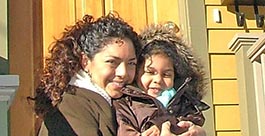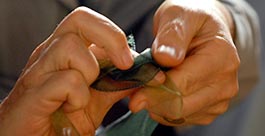Residents at Harborlight House in Beverly resoundingly said, “we want to stay,” as the facility faced increasingly difficult financial circumstances and the need for significant rehabilitation. Harborlight Community Partners set out to not only preserve the affordability of Harborlight House, but also improve it to better accommodate the needs of an increasingly frail population. Last year, Harborlight House received a $4 million tax-exempt bond to renovate the House’s 30 units as well as ensure each unit’s affordability for another 30 years. But the CDC is trying to provide more than just an affordable home.
Harborlight Community Partners developed an integrated services and housing model that ensures seniors are able to age in place, maintaining their independence as long as possible while accessing needed medical services. Thanks to the renovations at Harborlight House, seniors will now have better and more accessible units, with the addition of their own kitchenettes. At the heart of Harborlight House, common areas and a porch allow for people to gather, and the dining room is being expanded to safely accommodate the mobility equipment of residents. Seniors also have in-house care service, thanks to a partnership with Element Care and Associated Home Care.
Furthermore, Harborlight Community Partners supports a newly formed residential advisory council that can provide feedback on program operations as well as advocating for affordable housing across Harborlight’s service area, which spans from Lynn to Rockport. The goal is to build relationships and partnerships that will lead to a more holistic approach to low-income elder housing on the North Shore.
Fundamentally, what unites Harborlight Community Partners’ work is a deep commitment to dignified and well maintained housing that engages elders and creates meaningful and sustainable opportunities for low-income people. In fact, they are looking to expand their affordable housing model across their service area. As affordable housing for our communities’ elderly becomes an increasingly critical issue, Harborlight Community Partners plans to work with MACDC and others to spread this model across the Commonwealth and beyond.
Check out the complete 2016 GOALs Report and past GOALs Reports









